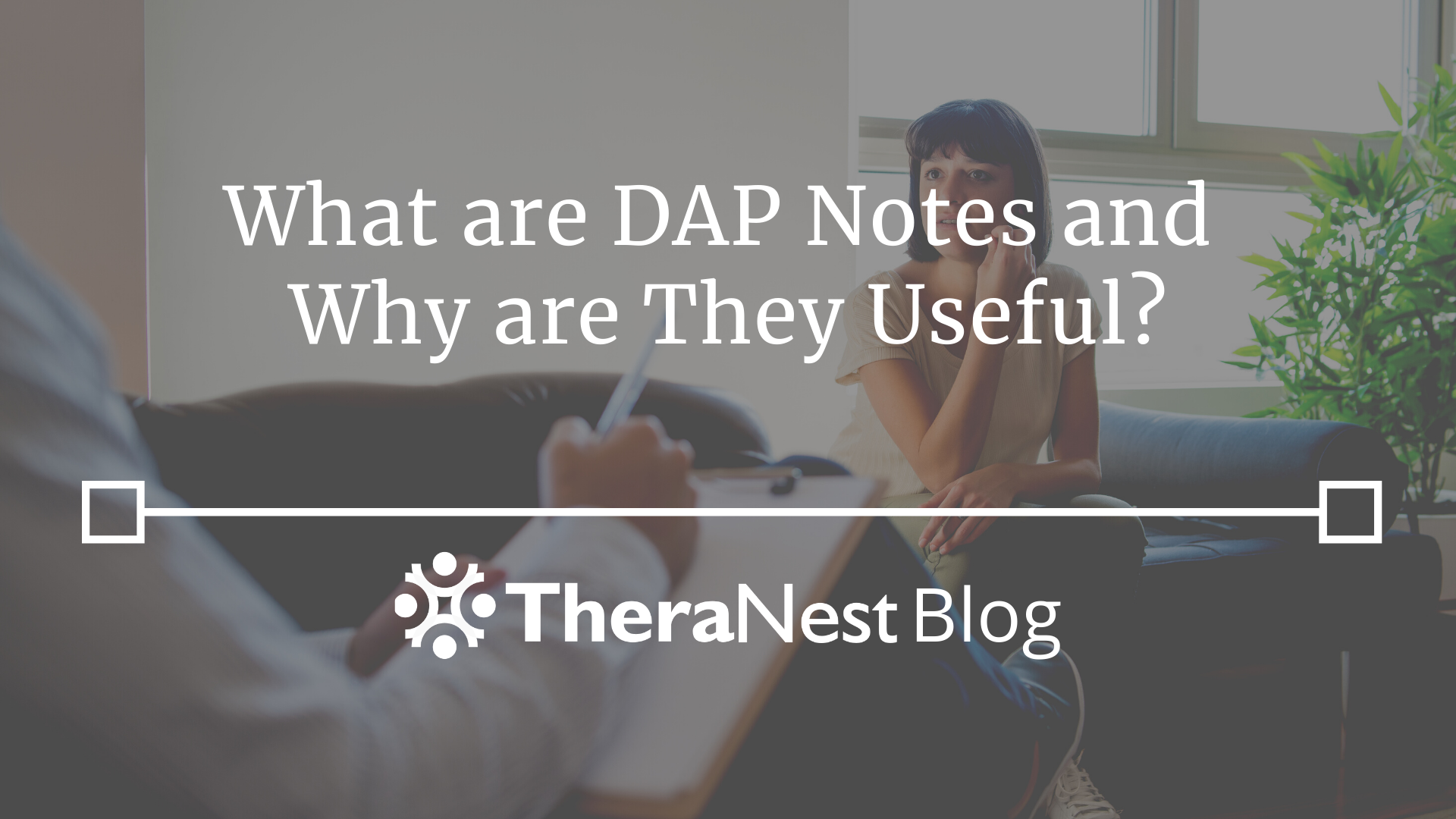
- Posted: May 5, 2021
- |
- TheraNest Team
DAP notes are an increasingly relevant form of case notes (or progress notes) in the mental/behavioral health field. Therapists everywhere rely on progress notes to record and manage each case as it unfolds. Each session with a client reveals a new direction or path that demands attention, but no two visits often create a straight and obvious road. The core purpose of note-taking is to help track the details of every session and inform the direction of the session after it. For therapists who see multiple clients in a day, progress notes are one of the most important tools for keeping everyone’s information straight and organized in your mind and in your files.
What are DAP Notes?
DAP is an acronym that stands for Data, Assessment, and Plan. This acronym sometimes includes an R (DARP), which stands for Response. DAP notes are a form of case note-taking aimed at helping mental and behavioral health professionals track the progress of their clients in an organized and efficient way. As a professional, utilizing DAP notes can help to cut down the time you spend on documenting without sacrificing the quality of the information that you input. It is important to note that as progress notes, DAP notes are a part of the client’s official record and may be shared/viewed by others.
Breaking Down the DAP Note Documentation Method:
The DAP note documentation method can be broken down into three components. Data, Assessment, and Plan.
Data
The Data section of DAP notes includes everything that was observed during a session with a client. This should include all relevant information that you were able to gather from your time with them. It essentially boils down to what you noticed about their behavior, disposition, and responses.
An example of this might include the emotional response of the client surrounding a certain topic or their overall mood throughout the session. A therapist could write “client appeared to be in a good mood” in their Data section or “the client responded with frustration about this topic.” If you are unsure what to include in this section at any point, ask yourself, “What did I see?”
Assessment
You have collected the data, now it is time to assess it. The Assessment section of DAP notes is the segment where the therapist documents their professional subjectivity regarding the session or their clinician interpretation. If your data shows that a client responded negatively, you might ask why they behaved this way or what it means in relation to their other sessions/current progress.
The Assessment section breaks down the data and transitions it from objective information to partially subjective professional understanding.
(Response)
The response section is sometimes used in the DAP notes acronym but is essentially an extension of the Assessment category. It essentially records the client’s response to your professional assessment. This can be an important tool for understanding the client’s progress and informing future treatment plan decisions.
Plan
The last letter in the acronym is P, which stands for Plan. The plan section of DAP notes is essentially the time in which the therapist makes decisions and forms a treatment plan. Professionals use the data they have collected by observing and listening to the client and their assessment of that information to form the next steps of the client. This section is valuable for understanding what has been learned and what progress has been achieved thus far.
DAP Notes vs SOAP Notes:
SOAP notes are the industry standard for progress notes. The acronym stands for Subjective, Objective, Assessment, and Plan. This became the standard as the industry pulled examples from the healthcare industry when forming its own documentation methods. The issue is, that unless you fall into the small category of behavioral health that is non-psychiatric, then treatment does not fall under the umbrella of “healthcare.”
The reason that many providers are making the switch to DAP notes is to avoid the confusion that SOAP notes create. In healthcare, it is easy to determine which notes should be labeled as subjective or objective. For example, the patient’s blood pressure is objective because it is not open to interpretation where their disposition might be considered subjective. Determining what is objective versus subjective is not as simple in the mental health field. DAP notes condense both sets of data into one section (Data), preventing any confusion.
Tips for Using DAP Notes:
Define What Must be Included in the Perfect Note:
The purpose of structured notetaking is to lessen the time that providers spend on notetaking and documentation. With every provider being unique, each person needs to determine what their perfect note might include. This essentially means creating a list of criteria that must be met in every section of your notes. This helps you standardize the information you need to make assessments and treatment plans.
Use Documentation Tools:
Tools that are formulated to help you take notes in an efficient way are a great place to start. Some documentation tools are already built with DAP note structures to make it easier for you to record all your information.
Keep it Simple:
Remember not to overcomplicate the process. Record only the information that is relevant to the session and will help you build a better plan.
Ready for an EHR to streamline your billing and practice management?

